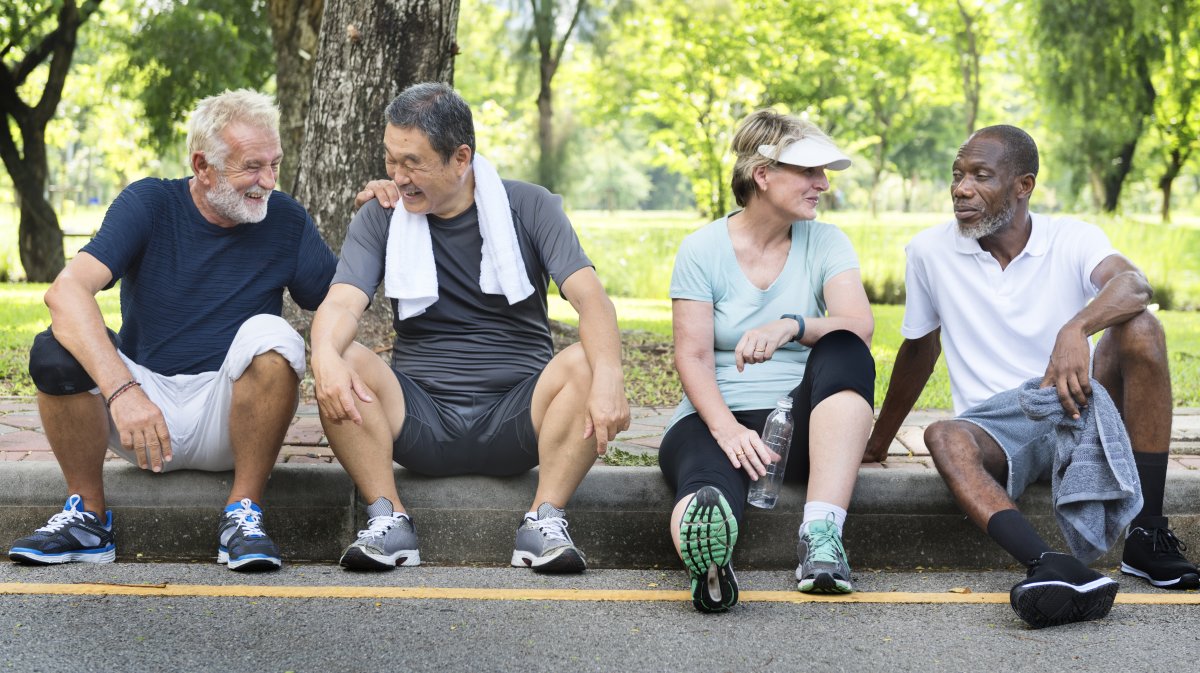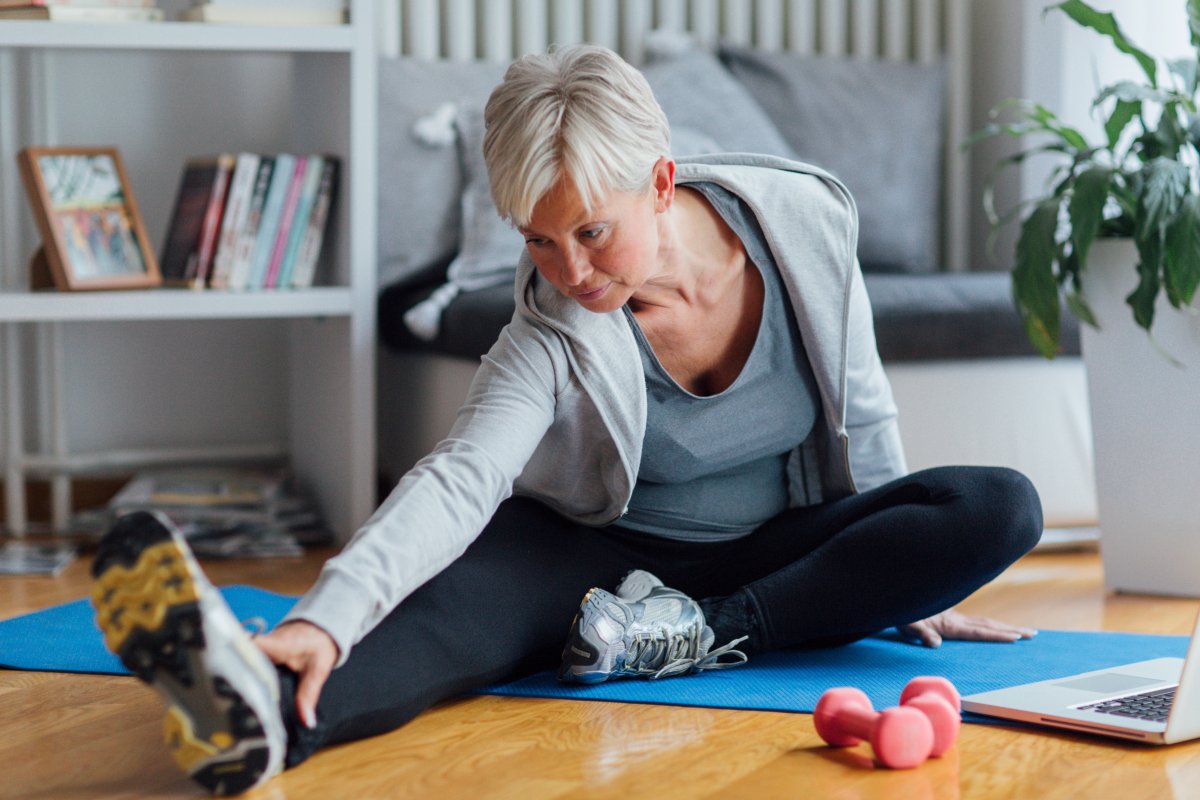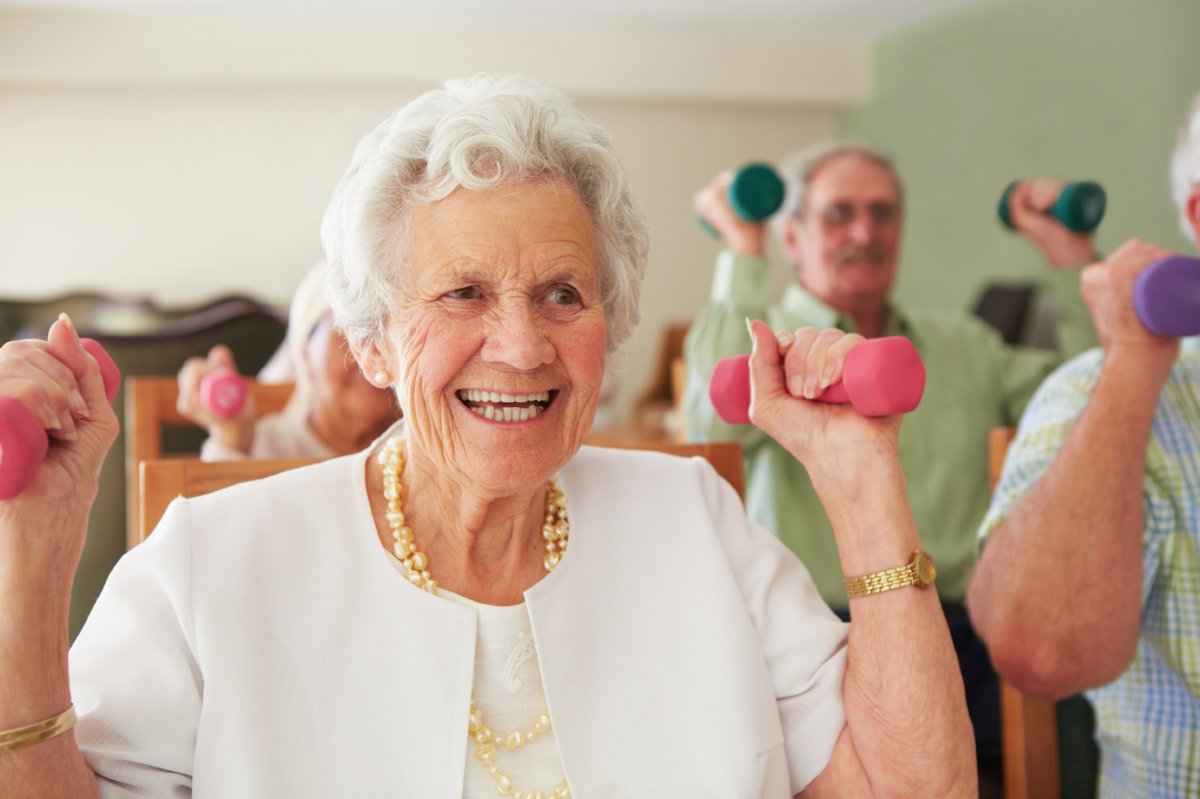When it comes to seniors and physical fitness, a little effort goes a long way.

Physical activity helps prevent falls, boosts mental well-being, increases energy and protects the brain. The 150 Play List has a lot of activities that older adults can try out.
Joanie Sims-Gould, a research scientist at the Centre for Hip Health and Mobility, has witnessed several small triumphs among the older adults participating in her organization’s Choose to Move initiative. ‘Choose to Move’ pairs participants with activity coaches for guidance, motivation and accountability. For example, one woman in her 80s couldn’t put on her own socks at the beginning of the six-month personalized fitness program, but by the end of the program she could get both her socks and shoes on, and walk farther than she had in years. A small group of seniors, who were socially isolated, started a walking group after going through the program together. Their activity coach, who is also a paramedic, said if some of her trainees had not been in the program – she would probably have been responding to their falls and resulting emergency calls in the future.
“What we see is people making small, sustainable changes that are having a big impact on their trajectories,” says Sims-Gould, who is also an assistant professor at the University of British Columbia. “The most important thing that you can do to prevent falls is to remain active or if you’re not active, to become active. Engaging in physical activity helps prevent a myriad of problems that are the precursors to falls. Often when you’re hitting the ground, there’s more going on.”
Falls are the leading cause of injuries among Canadians 65 years and older, with between 20 and 30 percent of seniors experiencing a each year. Falls account for 85 percent of seniors’ injury-related hospitalizations and cause 95 percent of hip fractures. Sims-Gould points out that the vast majority of the older population is sedentary with only about 11 percent of seniors getting the recommended amount of at least 150 minutes of moderate-to vigorous physical activity per week. As British Columbia celebrates Seniors’ Week, it’s the perfect time for older adults to make new or renewed commitments to their health.
“It’s never too late to start exercising,” says Colin Milner, CEO and founder of the International Council on Active Aging. “To get a result—lose weight, be healthier, reduce the risk of falls—you just have to get up off the couch and start moving.”
Being physically active affects all aspects of daily life, from having the flexibility to bend over and tie your shoes to having the strength to carry your own groceries home. Between the ages of 35 and 75, we lose about 75 percent of our power and 50 percent of our strength if we’re inactive, says Milner, who’s based in Vancouver. “Losing 50 percent of my strength is like putting someone who weighs the exact same amount as I do on my shoulders and walking around all day long with them,” he says. “Power gives you the ability to respond quickly. If I have lost 75 percent of my power, I am more likely to potentially fall.”
Other benefits to regular physical activity include lowering the risk of Type 2 diabetes and high blood pressure and increasing blood flow to the brain, bringing oxygen and nutrients the brain needs to stay healthy.
Recovering physically and mentally from a fall can be difficult and many seniors may think limiting their activities is the best way to stay safe and avoid future falls. However, the opposite is true: by limiting your activities you may lose strength and flexibility and increase your chances of falling again.
“Exercising is very much like brushing your teeth,” Milner says. “You brush your teeth because you want to keep your gums healthy so they support your bones. You want to exercise so you keep your muscles strong and limber so they support your skeletal system so you can function day to day and reduce the risk of falls.”
If it has been a while since you’ve exercised, it can be hard to know what to do or where to do it. The Choose to Move program can be accessed at a number of participating recreation centres and YMCAs, while most community centres have programs for seniors. But Sims-Gould points out that you don’t have to join a program or put on spandex to be active. “You can sneak exercise into your schedule without even knowing that you’re doing it,” she says. “At the end of the day, it’s about getting moving.”
If you sit all day, Sims-Gould recommends standing and then trying to walk around your home. If you walk, try walking a little farther and faster.
Perusing the ParticipACTION 150 Play List can also help get you motivated and moving. The collection of 150 physical activities curated by Canadians in celebration of the country’s 150th birthday, has several activities that are ideal for seniors and promote strength, flexibility and balance. Low-impact options include tai chi, dancing and yoga. There are also lots of health-promoting hobbies you can try out in nature, including gardening, hiking and fishing. If you’re not quite ready to get your sweat on in public, the BC Falls and Injury Prevention Coalition has collected some resources to help you exercise safely at home.
In an effort to encourage seniors to get fit, the provincial government has been working with communities through its Age-friendly British Columbia , which offers grants for projects that improve the lives of seniors. The goal is to foster communities where older people have the support they need to enjoy active, socially engaged, independent lives. Age-Friendly also supports active transportation efforts such as the widening of trails to improve walkability, thereby helping older adults age in place in their community of choice and connect with others while engaging in physical activity. For example, in the Central Okanagan Regional District, access to parks has been improved to accommodate all levels of mobility through the widening and levelling of trails and the addition of signage to identify senior-friendly trails. And in Keremeos, seniors can hop on and get their heart rate going while they keep an eye on the grandkids in the neighbouring play area. The provincial government has also created Aging Well – an online resource with tips, tools and inspirational videos to help older adults age well.
Investing in seniors’ health is money well spent, says Milner. Approximately $2 billion annually is spent on health care costs associated with seniors’ injuries. Beyond the ballooning costs of health care and personal suffering, unhealthy seniors can also exact a cost on their families, who may have to sacrifice their careers, volunteer work and even caring for their own children, to care for parents.
“My question to people is what is your return on health, your ROH?” Milner says. “We know what it costs to address illness and it’s continuing to rise, but what does it cost to actually have a healthy population?” The savings can be huge, he says, pointing to research that shows that North Americans 50 and older who walk for 30 minutes a day, five times a week, reduce the cost of their health care by roughly $2,500. “The more we can do to get people physically active, the better it will be for the province and the country.”



